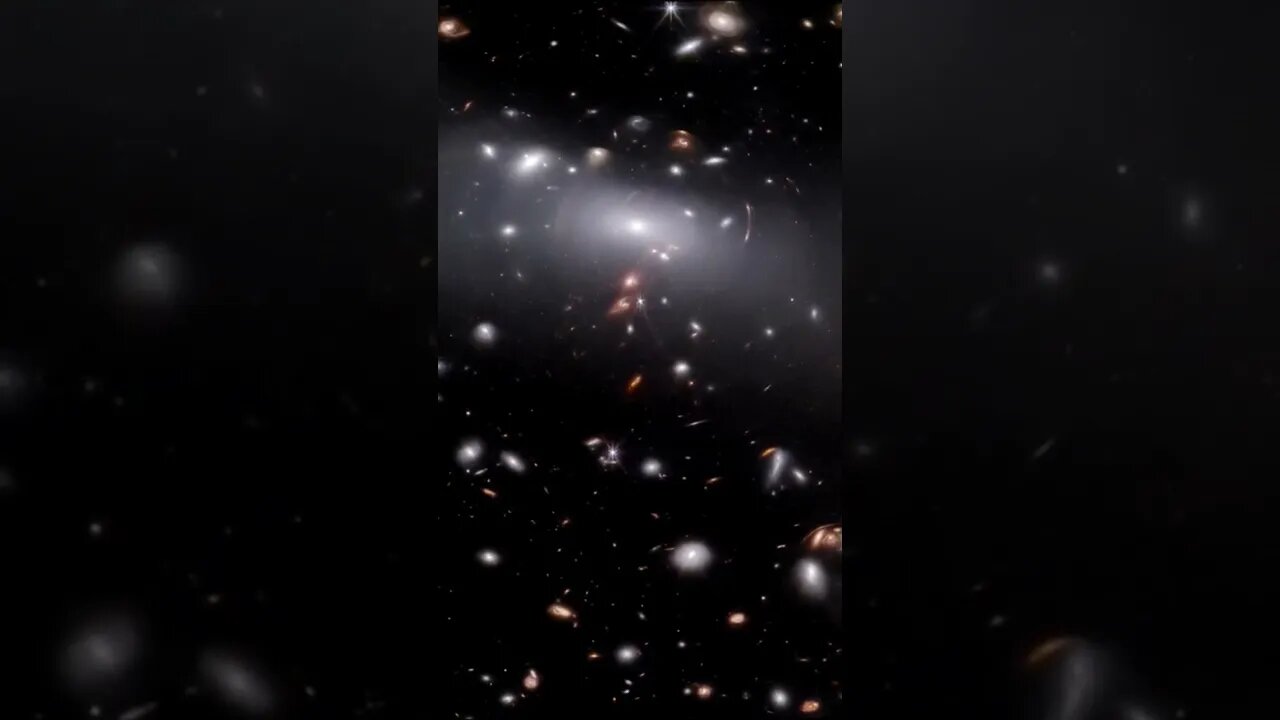Premium Only Content

Stepping Through the Looking Glass: Gravitational Lensing and the Secrets of the Universe #shorts
In this video, we explore the fascinating concept of gravitational lensing and how it helps astronomers measure vast distances. Thanks to powerful instruments such as the Hubble Space Telescope and James Webb Space Telescope, we can view objects that predate the formation of our solar system. Gravitational lensing allows us to observe even further back in time during the formation of our early universe. We compare this lensing effect to looking through a large cylindrical glass of water, where objects behind the glass appear distorted. Through innovative techniques based on quantum mechanics, Styx AI is developing depth maps, generative imaging, machine learning, and new mathematics to move the glass of complex nonuniform spacetime. Our process can break down an image into nearly infinite pieces, providing greater depth and detail to reveal previously unseen information.
Gravitational lensing is a phenomenon that occurs when the path of light from a distant object is curved by the gravitational pull of a massive object, such as a galaxy or a cluster of galaxies. This bending of light can cause the distant object to appear distorted or magnified, depending on the geometry of the gravitational lens.
The effect of gravitational lensing can be seen in a variety of astronomical observations, from the images of galaxies and clusters of galaxies to the cosmic microwave background radiation. In some cases, gravitational lensing can even be used to magnify distant objects that are otherwise too faint to be observed directly, allowing astronomers to study the properties of these objects in more detail.
One of the most famous examples of gravitational lensing is the Einstein Cross, which is a quasar that appears as four distinct images due to the gravitational lensing effect of a foreground galaxy. This phenomenon was predicted by Albert Einstein's theory of general relativity, which describes gravity as a curvature of spacetime.
In addition to its use as a tool for studying the properties of distant objects, gravitational lensing can also provide insight into the distribution of dark matter in the universe. Dark matter is an invisible form of matter that is thought to make up a large fraction of the total mass in the universe, and its distribution can be inferred from the gravitational lensing effect it produces.
Overall, gravitational lensing is a fascinating and powerful phenomenon that has many applications in astronomy and astrophysics. By studying the distortions and magnifications caused by gravitational lenses, astronomers can learn more about the structure and evolution of the universe, as well as the properties of individual objects within it.
STYX AI showcases this observation captured by the James Webb Space Telescope of the massive galaxy cluster RX J2129. This observation contains three different images of the same supernova-hosting galaxy, which was discovered using observations from the Hubble Space Telescope. The uniform luminosity of a Type Ia supernova allows astronomers to understand how strongly the galaxy cluster RX J2129 is magnifying background objects and therefore how massive the galaxy cluster is. Gravitational lenses can cause distant objects to appear much brighter than they would otherwise, and if the gravitational lens magnifies something with a known brightness, such as a Type Ia supernova, then astronomers can use this to measure the ‘prescription’ of the gravitational lens.
At Styx AI, we specialize in image processing of medical and astronomical images. Our commitment to advancing medical imaging technology extends to our work in cancer detection, where we use our image decomposition techniques to extract exquisitely accurate features, reconstruct images, and provide new insights into the structural morphology of target images. We are dedicated to developing and validating our software to reveal new information and insights about the universe by leveraging the pristine astronomical imaging data released by NASA and other organizations.
Join us as we step through the looking glass and reveal the secrets of the universe through gravitational lensing and innovative image processing techniques.
Credit:ESA/Webb, NASA & CSA, P. Kelly
Processed by STYX AI
@NASA @NASAGoddard @NASAJPL @NASAgovVideo @NASAWebbTelescope @EuropeanSpaceAgency
#gravity #astronomy #jameswebbspacetelescope #hubblespacetelescope #deepspace #quantummechanics #machinelearning #nasa #science #space
#styxai
-
 2:00:54
2:00:54
Redacted News
4 hours agoBREAKING! Putin just SHOCKED the world, launches nuclear capable warheads "NATO can't stop it"
142K250 -
 55:37
55:37
Candace Show Podcast
4 hours agoMatt Gaetz Out, Jussie Smollett Walks Free! | Candace Ep 108
100K229 -
 LIVE
LIVE
LFA TV
22 hours agoTrump Has Learned His Lesson | Trumpet Daily 11.21.24 7PM EST
699 watching -
 LIVE
LIVE
theDaily302
11 hours agoThe Daily 302-Special Border Invasion Shutdown Show
161 watching -
 4:29:05
4:29:05
Tate Speech by Andrew Tate
12 hours agoEMERGENCY MEETING EPISODE 92 - IN THE TRENCHES
748K1.01K -
 1:01:23
1:01:23
In The Litter Box w/ Jewels & Catturd
1 day agoThe Trump Effect | In the Litter Box w/ Jewels & Catturd – Ep. 696 – 11/21/2024
81.4K29 -
 20:53
20:53
SLS - Street League Skateboarding
2 days agoGold Medals, World Class Food, Night life & more - Get Lost: Tokyo
75.9K7 -
 47:13
47:13
PMG
20 hours ago $1.26 earned"Hannah Faulkner and Doug Billings | WHY LIBERALS LOST THE ELECTION"
41.9K -
 59:01
59:01
The Liberty Lobbyist
6 hours ago"We Only Have NOW To Make a Difference"
42K2 -
 4:16:41
4:16:41
CatboyKami
8 hours agoStalker 2 Blind playthrough pt1
40.9K2